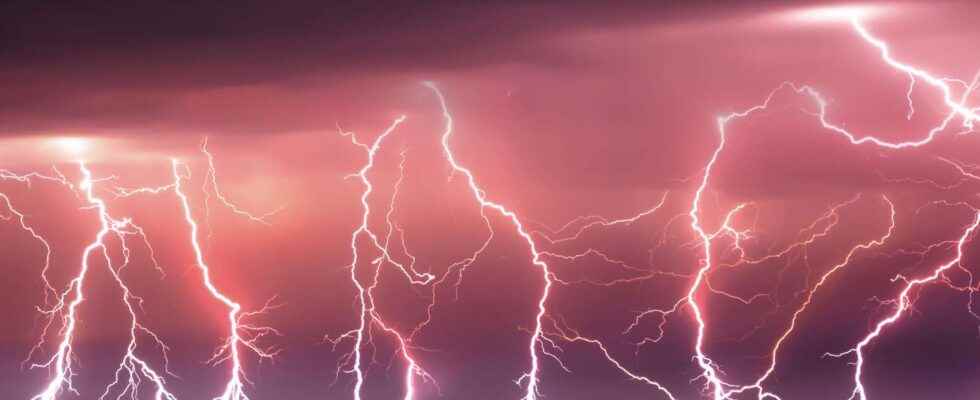A team of scientists has used a space telescope to try to understand the origins of lightning inside storm clouds themselves.
You will also be interested
[EN VIDÉO] How do thunderstorms form? France has an average of 250 days of storms per year. How and why are these powerful phenomena born, accompanied by lightning and thunder?
Lightning still holds many secrets despite advances in scienceatmosphere. It is an electrical discharge that occurs in the atmosphere, either inside a cloud, between two clouds, or between a cloud and the ground. This electric arc is generated by the clouds ofthunderstorm, the cumulonimbus : to flattened top of this cloud, which culminates at 12 to 18 kilometers, positive charges accumulate in the small ice crystals at altitude. In the center of the cloud, on the other hand, there are negative charges. At the base of the cloud, positive charges circulate again, rather weak. This distribution of charges electrifies the cloud, but until now scientists have never really been able to understand where and how exactly the lightning strikes.
In the past, several attempts have already attempted to “look” through the thundercloud, however, these attempts have encountered several problems: the cumulonimbus is so dark and turbulent that the measuring instruments have not really succeeded to accurately capture the starting point of the lightning. And above all, by sending weather probes and balloons directly through the cloud, these instruments actually interfered with the electricity inside the cloud and generated new electrical discharges, which were therefore not completely natural!
The ice crystal hypothesis confirmed
However, in 2018 a telescope, the Lofar, was able to capture the first moments of lightning striking through a cloud in the Netherlands (the data could not be processed until late 2021). Lofar (Low-Frequency Array) is actually a network of small radio telescopes located in the Netherlands, originally used to study the galaxies distant and the explosions ofstars. The study team on the origins of lightning understood that these telescopes were very successful in capturing the pulsations radio emitted by electrical discharges from clouds ofthunderstorm. The originality of Lofar is then to be able to map the electrical discharges inside the cloud, meter by meter, in three dimensions and with an image frequency 200 times higher than the previous instruments. An arc of lightning generates millions of radio pulses, from which scientists were able to reconstruct an accurate 3D image, using an algorithm similar to that used for theApollo mission landing on the Moon.
To explain the initial triggering of lightning, two main theories were opposed until now. In the first hypothesis, particles of space encountered the electrons in the storm cloud and then triggered the discharge, whereas in the second hypothesis its triggering is solely due to the collision of different ice crystals. But the first conclusions of the Lofar captures point to a formation essentially linked to ice crystals inside the cloud: the friction of these needle-shaped ice particles, with positive and negative charges, ends up forming a conductive channel in which the electric arc can flow. The study of the role of ice particles in the triggering of lightning has moreover led to astonishing conclusions: the satellites have shown that during the first three months of the pandemic of Covid-19 in 2020, the number of recorded flashes fell by 10%. Scientists from the Lofar project believe that the drop in pollutants in the atmosphere, linked to the numerous confinements around the world, has left fewer possibilities for nucleation to ice crystals.
Even if they present a certain advance in the understanding of the first stages of development of the lightning, Lofar’s measurements did not, on the other hand, make it possible to determine the initial moment of the triggering, when the ice particles ionize theair just at the time of the electric discharge. The exact course of the process, from its initiation to its point of impact on earth, remains to be clarified.
Lightning modeling inside the cloud using Lofar data. ©astron.nl
Interested in what you just read?
.
fs11
